🔍 Quick Insight: Most whole-house filters handle either sediment or chlorine — this setup tackles both without breaking the bank or choking your flow rate.
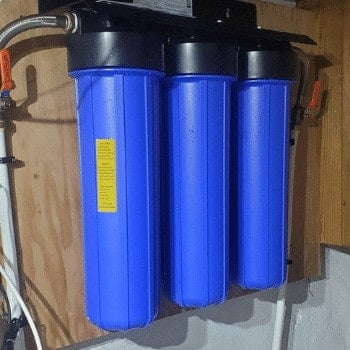
Scoring basis
- Filtration (45%): triple-stage system with NSF/ANSI compliant sediment + carbon filters for chlorine and sediment reduction
- Flow/Pressure (20%): rated 15 GPM
- keeps pace with medium–large households
- Install/Maint (10%): DIY-friendly installation
- cartridge changes every ~100k gallons
- Build (10%): solid housings
- simple cartridge replacement system
- Taste (5%), Cost (5%), Certs (5%)
Ever washed a glass only to find it still cloudy? Or stepped into the shower and caught a whiff of pool water?
This 3-stage system doesn’t just filter — it cuts through sediment, chlorine, and funky odors without gutting your water pressure. And it’s priced like a basic setup, but packs more punch than you’d expect.
💬 One user put it best: “Our water finally smells and tastes like water — not a swimming pool.”
Highlights
- 🛠️ No drop in pressure: Filters without choking your flow — showers stay strong.
- 🌊 100,000-gallon capacity: Enough clean water for a year or more.
- 🔄 3-Stage Defense: Sediment, chlorine, and VOCs — gone.
- 🧼 Easy maintenance: Twist-off cartridges make swaps simple.
- 💧 No mineral loss: Keeps healthy minerals intact while tackling contaminants.
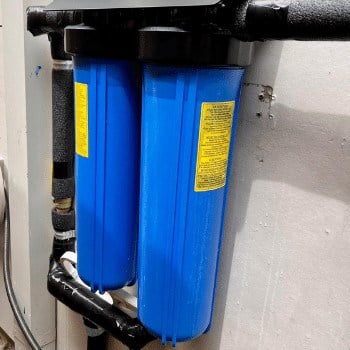
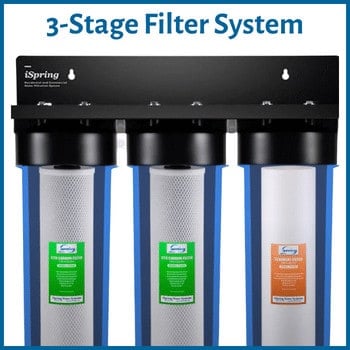
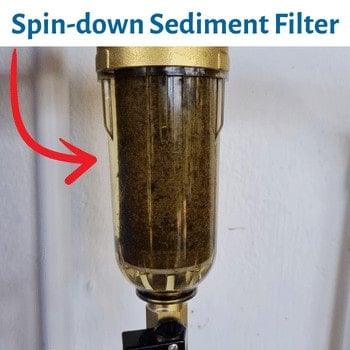
✅ Who It’s For:
💡 Here’s the deal: Ideal for city water that’s heavy on chlorine or other chemical residues. It’s not designed for well water or areas with heavy metals, but for families looking to strip out odors and off-tastes without a bulky, high-maintenance system, it’s a solid pick.
⚠️ Heads-up: If your plumbing is older or prone to rust, the sediment stage can clog faster. Keep a spare on hand to avoid backups.
✅ Pros:
- 🛠️ Filter swaps that don’t make a mess: Even if you’re not handy, you can swap these filters without flooding the floor — twist, replace, done.
- 💦 Steady flow, even on laundry day: No surprise drop-offs, even when the washer and shower run at the same time.
- 🌱 Surprisingly long filter life: City water users say the sediment filter often outlasts the 6-month mark, especially in areas with treated municipal water.
- 🧼 Shower feels less like a bleach bath: Chlorine reduction is noticeable, especially in the shower where steam amplifies that chemical scent.
- 🏡 Fits where other systems don’t: Compact enough to tuck into a cramped basement or tight utility closet.
⚠️ Cons:
- 🔧 Not beginner-friendly: If you’re not used to cutting pipes or dealing with shut-off valves, expect a learning curve — or a call to a plumber.
- 🛠️ Sediment filter clogs fast in older homes: If your pipes are rusty or you’re dealing with silt, the first stage can clog sooner than expected.
- 💰 Filter costs add up over time: You’ll spend around $225 annually on replacements. Compare that to the SpringWell CF1 — it’s a one-time $975 investment that filters up to 1 million gallons, making it a long-term win if you plan to stay put.
🧐 My Take:
If your water’s been tasting like pool runoff, this setup can feel like a breath of fresh air. The sediment filter does the heavy lifting upfront, and the carbon blocks scrub out the chlorine without stripping away every trace of minerals.
It’s not a magic bullet — heavy metals or iron are out of its league. But for city water, it’s a noticeable upgrade in both taste and clarity without the sticker shock of a tank-based system.
💡 Heads-up: If you’re already dealing with rust or debris, consider adding a pre-filter to extend the life of the main cartridges. It’s worth the extra money that can save you from going thru filters to quickly.
💧 Water Testing
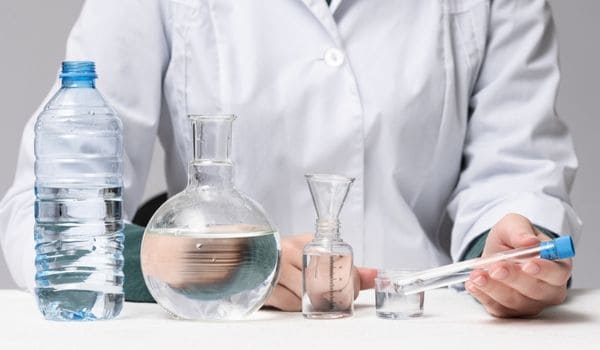
Before you throw money at a filtration system, know what you’re dealing with. This setup targets sediment, chlorine, and basic VOCs — great if you’re on city water. But if you’re dealing with metals, bacteria, or other nasties, a 3-stage system won’t cut it.
Why Test?
- Pinpoint what’s actually in your water — lead, iron, bacteria — not just what you assume is there.
- Save money by skipping filters that don’t address your specific issues.
- Avoid surprises — like finding out your chlorine-heavy water also has high iron content.
Testing Options:
- 🛠️ DIY Kits: Quick and basic. Great for chlorine and pH but not reliable for metals or bacteria.
- 🧪 Lab Testing: The full workup. More expensive, but if you’re serious about knowing what’s in your water, this is where you’ll get the details.
💡 Pro Tip: If you find unexpected contaminants (like lead or iron), iSpring makes add-on filters that plug into the existing setup — no need to buy a whole new system..
🚀 Performance Features
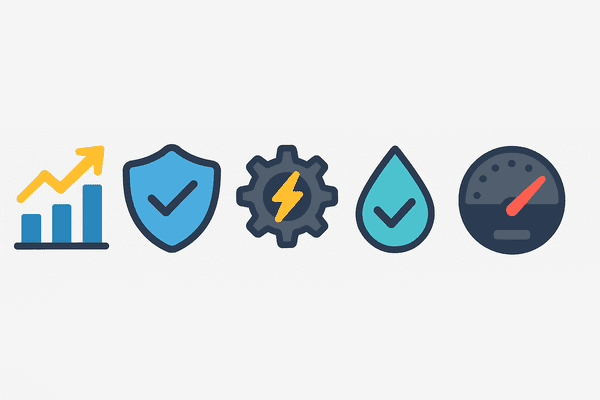
For a budget system, this setup punches above its weight when it comes to flow rate and sediment control. While some 3-stage filters choke your pressure, this one keeps the water flowing strong without sacrificing filtration.
| 💧 Flow Rate | 🛠️ Sediment Control | 🌱 Carbon Filtration | ⏳ Filter Lifespan |
|---|---|---|---|
| 15 GPM — showers, sinks, and washer can all run without noticeable drop | 5-micron sediment filter catches the grit before it hits the carbon stages | Dual carbon blocks target chlorine, VOCs, and odors — without over-filtering | 100,000 gallons per set — 6 months for sediment, 12 months for carbon |
⚡ Take Note: If your plumbing is older or your water has a lot of particulates, plan to swap the sediment filter more often. It’s the first line of defense and the first to clog.
🧪 What It Filters Out:

If your water has a chemical bite or a weird aftertaste, this system handles it without stripping your water down to zero. It’s not going to tackle metals or bacteria — but it’s a solid middle ground for everyday city water issues.
What It Handles Best:
- 🚫 Chemical Odors: Gets rid of that lingering pool water scent after washing dishes or showering.
- 🛠️ Sediment Control: Catches grit and sand that can slip through municipal treatment.
- 🧴 VOCs & Residues: Tackles chemical runoff from lawns, driveways, or nearby industrial sites.
- 🦠 Pesticides & Herbicides: Not a full-blown toxin filter, but it catches the basics.
- 💧 Taste & Odor: Noticeably cleaner-tasting water without going overboard and making it taste flat.
💡 Take Note: After installation, run the water for 30 minutes to flush out any lingering sediment or carbon dust. It’s a quick step that keeps your water tasting fresh from the first drop. 👍🙂
💧 Flow Rate & Capacity
You can run the dishwasher, shower, and sink all at once without the water slowing to a trickle — a rare find for a budget system. And with a 100,000-gallon capacity, it’s built to handle the basics for a year before needing a full filter swap.
- ✅ Real-World Flow: 15 GPM is more than enough to keep water pressure steady, even during peak use.
- ✅ Expected Lifespan: 6 months for sediment, 12 months for carbon. Actual lifespan may vary depending on your water quality.
- ✅ What to Watch For: If the flow starts to dip, it’s usually the sediment filter clogging up first. Plan to swap that one more often if your water has visible grit or rust.
💡 Take Note: If you’re seeing a sudden drop in pressure, check the sediment stage first — it’s usually the first to clog, especially in areas with construction or seasonal water line flushing.
🛠️ Filter Maintenance & Replacement
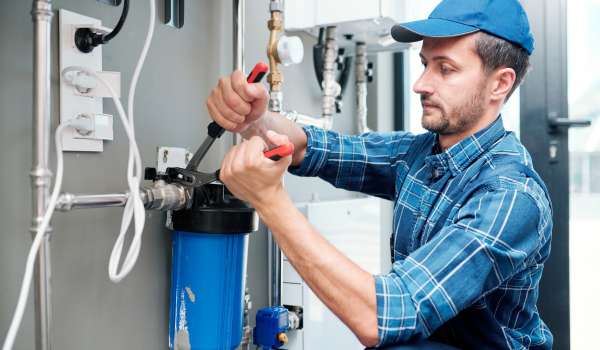
Filters don’t just clog — they give you signs. Here’s what to watch for:
- 🔄 Sediment Stage: Feel like the shower’s sputtering or the dishwasher’s taking forever to fill? First stage is likely clogged. Swap it before it slows down the whole system.
- 💧 Carbon Blocks: If chlorine taste sneaks back in or water starts smelling musty, don’t wait. Even if it’s not “time,” the carbon filters may be shot.
- 🧽 After Each Swap: Flush for 20–30 minutes to clear out carbon dust. It’s a small step but keeps that first glass from tasting like powdered charcoal.
- 📦 Stay Stocked: Multi-pack filter kits are cheaper and keep you from scrambling to replace a clog at the worst time — like right before guests show up.
💡 Take Note: Some users suggest marking filter change dates right on the cartridge with a Sharpie — simple, but effective.
🛠️ Help & Support
When things go sideways, iSpring’s customer support is there to pick up the slack. Their US-based team is known for being responsive and solution-focused, with multiple ways to reach them — phone, email, and live chat.
- Warranty: 1-year limited. Not the longest in the game, but it covers parts and workmanship defects.
- Returns: 30-day satisfaction guarantee. If the system isn’t the right fit, you can send it back for a refund.
- Replacement Parts & Filters: Easily available through iSpring’s website and other major retailers.
💡 Take Note: Their support reps are known for walking you through troubleshooting without pushing unnecessary upsells. If you’re stuck, they’ll actually help you solve the problem instead of just reading from a script.
🛠️ DIY Installation
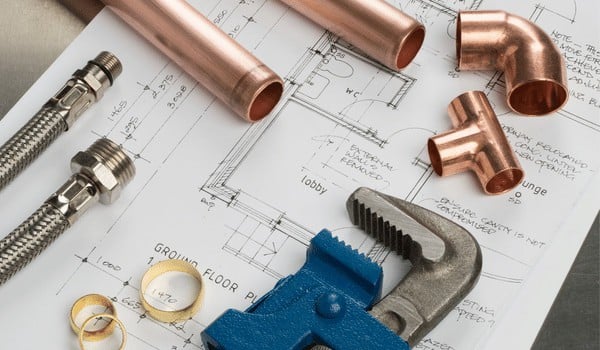
This isn’t a plug-and-play system. You’re going to need some basic plumbing skills, a free afternoon, and a decent wrench. Here’s the gist:
- Tools You’ll Need: Pipe cutter, Teflon tape, adjustable wrench, bucket, and a towel (trust me, there will be spills).
- Prep Work: Shut off the main water supply, drain the lines, and have a game plan for where each stage will go. Make sure you have enough clearance to swap filters without a wrestling match.
- Hook-Up Tips:
- Sediment Filter First: This one catches the big stuff (sand, rust, dirt) before it clogs the carbon stages.
- Carbon Blocks Next: Pay attention to the flow direction arrows. Reverse them, and you’re just wasting water.
- Flush It Out: Once connected, run water through the system for a good 30 minutes. It’ll clear out any carbon dust and prevent black water surprises in your first shower.
💡 Take Note: If your plumbing is older or prone to leaks, consider adding shut-off valves before and after the system. It’ll save you a lot of aggravation and cussing during filter changes.
🔍 Comparable Alternatives to iSpring:

Not all 3-stage systems play by the same rules. Some focus on chemical reduction, others on heavy metals — and a few are all about flow rate. Here’s how this one measures up:
- 💰 For Budget Shoppers: Home Master HMF3SDGFEC — If rust stains and sediment are your main headaches, Home Master’s iron-heavy filter set is a better bet. It’s pricier upfront but targets iron and heavy metals better than the iSpring.
- 💎 For Chemical Contaminants: KIND E-1000 — This one’s a carbon-centric system with a higher flow rate and tighter VOC control. Not as budget-friendly as the iSpring but a solid pick for city water with heavy chemical runoff.
- 🏡 For Long-Term Savings: SpringWell CF1 — A tank-based setup that handles 1 million gallons for a one-time cost of $975. If you plan to stay in your home for a few years, it’s a better long-term investment than replacing cartridge sets every 6–12 months.
💡 Takeaway: If your main concern is sediment and chlorine, the iSpring keeps it simple without over-complicating things. But if you’re battling iron, VOCs, or want fewer filter swaps, consider stepping up to a more targeted system.
👀 Still Searching?
Not convinced the iSpring 3-Stage is the perfect fit? Water quality issues aren’t one-size-fits-all, and sometimes you need something a little more specialized.
If your water has lingering odors, heavy metals, or sediment that just won’t quit, consider these alternatives:
- ✅ Need extra protection against lead and iron?
- ✅ Looking for a low-maintenance system with fewer filter swaps?
- ✅ Want a setup that handles well water and city water equally well?
If that sounds like your situation, check out these top-rated systems below — each one brings its own unique edge to the table.
Compare Leading Brands:
 105 people found this helpful. Was this guide helpful to you?
105 people found this helpful. Was this guide helpful to you? 

